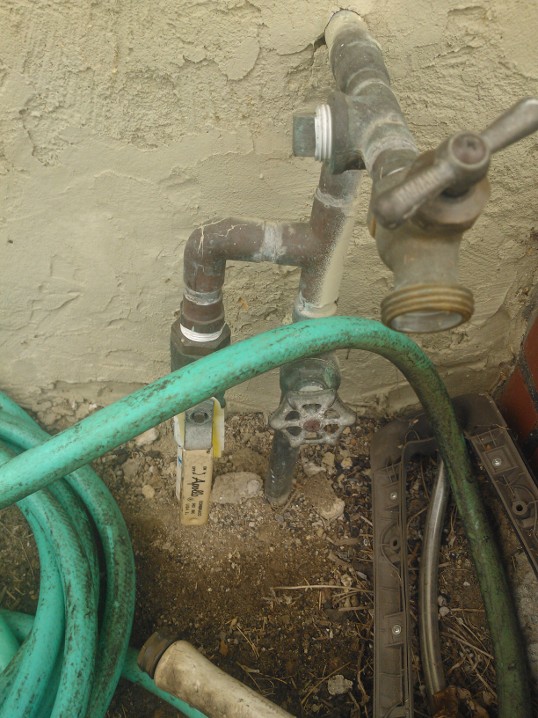Sorry guys, that picture was just an EXAMPLE that I pulled off google of a bib that is also a service. I went back out to the house again and took some pics. One is actually the service. It is painted but copper pipe. The house seems to be solig galvinized pipe with just a small section missing (maybe 10') between the service and the rest of the house. It, apparently used to go up the outside of the wall and over a window where the pipe picks back up agian and then goes into the house.
View attachment 8382
This house is actually a pile of crap. When I first went over there I asked my friend if he needed my help in tearing it down. I took a picture of the front and living room just for fun.
View attachment 8383View attachment 8384
Also, after talking to my friend yesterday he said that there used to be a hose bib right next to the panel but it got broken off at ground level. I am figuring that the inspector just wants the plumbing bonded and ran a 4' piece of wire to that. (Hooking it to the service wouldn't have done anything to the house anyway) He is going to fix that bib back in place and clamp the wire to it. Hoping for the best.


![20130418_181720[1].jpg 20130418_181720[1].jpg](https://forums.mikeholt.com/data/attachments/2/2573-e3dc7f8541cefbccdea0ed6ab734c1da.jpg)
![20130418_181811[1].jpg 20130418_181811[1].jpg](https://forums.mikeholt.com/data/attachments/2/2574-7619291127957c36006e152c81a37f45.jpg)
![20130418_181825[1].jpg 20130418_181825[1].jpg](https://forums.mikeholt.com/data/attachments/2/2575-b0e3e4c57efde15c8e3d29668bb10212.jpg)
